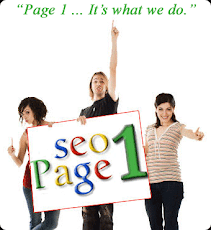Monday, August 10, 2009
Design Your Logo Like A Pro
A logo is the image which represents a company or its product. It's function is to create a memorable, recognizable impression on the mind of a potential client or customer. A logo is essentially at the heart of a corporate identity.
So what makes a "good" logo? Most people would answer "I just know it when I see it!" and this isn't so far from the truth. A good logo catches the eye - it makes the observer curious or engaged, if only for a short moment. A moment in which an image and the existence of your company is embedded in the mind rather than filtered out with a million other daily stimulation, But even if a good logo 'just is', there are elements for making it happen and we will look at some of those.
There are three basic types of logos, which can be used alone or combined within one design:
* Illustrative logos (a logo which clearly illustrates what your company does),
* Graphic logos (a logo that includes a graphic, often an abstraction, of what
your company does), and
* Font-based logos (a text treatment which represents your company)
Creating a logo is always a process - though different designers have their own methods. Many designers will begin by sketching thumbnails or playing with shapes on the computer screen, until something "clicks" and they follow that path to see where it leads. One way to start is to select a shape which represents the concept of the company, and begin playing with it. The idea is to come up with something interesting or clever, whether a viewpoint which is different, or an unusual combination of shapes. Perhaps it will be something which will require some guesswork on the part of the viewer, but then be crystal clear when they look at it another way.
Many designers prefer to developing logos beginning with, or consisting entirely of text. By experimenting with fonts, size, shapes they seek to find an interesting way to represent the company using the form of letters. Again, simplicity is extremely important - this is not the time to use fancy decorative fonts. Whether alone or combined with graphic elements, the text in a logo must be easily readable at small sizes.
Once a form for the logo has been defined, color needs to be considered. Again, color for a logo should remain simple. You can always get fancy with the web version, but a good logo must work well in one color and gradients of that color. The color should enhance and support the form of the logo - for example, various shades of blue on the sides of a 3D box should be the same as they would in real life.
Contrast is another powerful concept in the creation of logos - you can contrast size, color, fonts, and textures - to create visual interest.
A logo should be simple and abstract, not be complicated or confusing, and again, all elements must be discernible when reproduced in small sizes.
Related Links :
Internet Media Solutions l Superhostindo l Jababeka Business l Ayo Kencan l Kesaksian Kristen l Lirik Lagu Rohani Kristen
Subscribe to:
Post Comments (Atom)



.png)
No comments:
Post a Comment